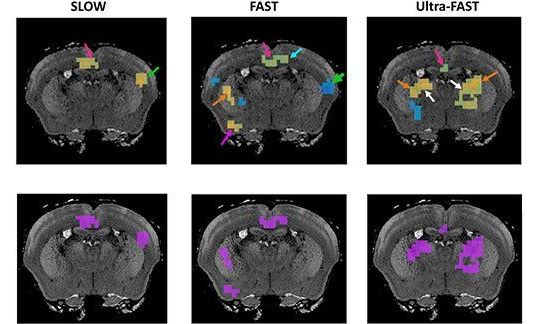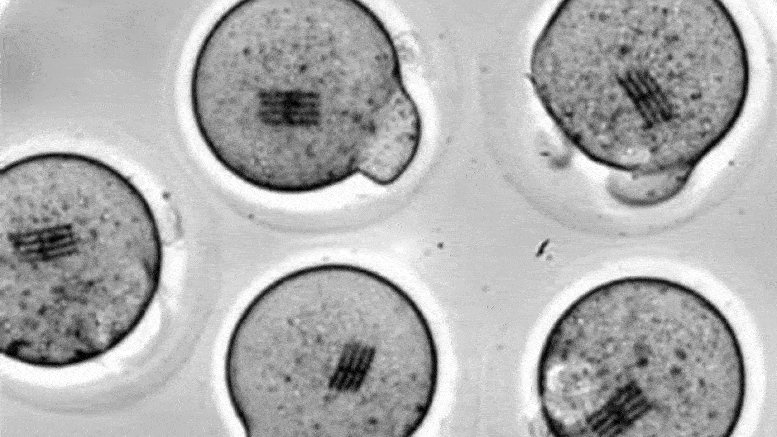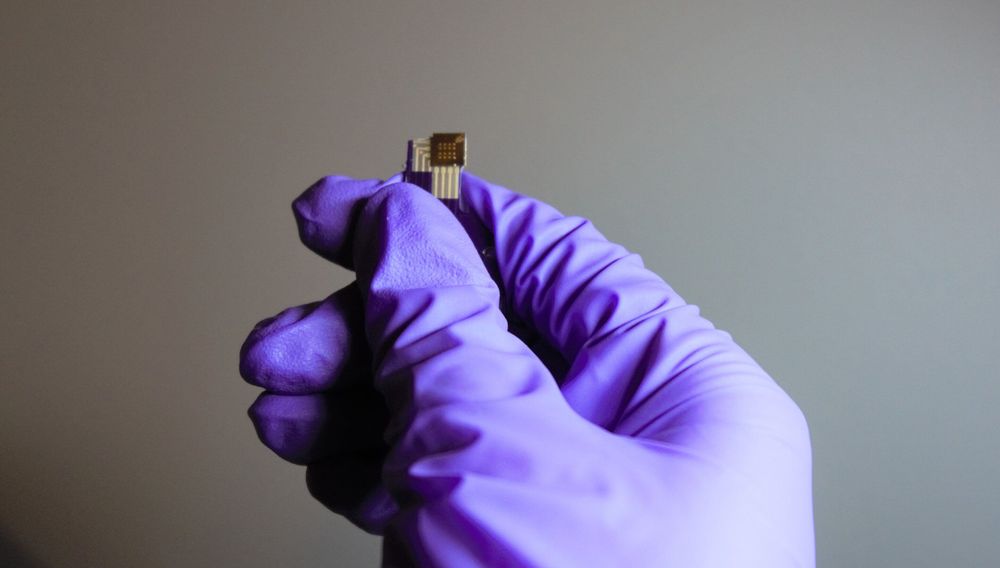XAG, one of China’s largest makers of agricultural drones, expects increased automation for planting rice in the country’s farmlands as a way to raise efficiency, while mitigating labour shortage and the threat of Covid-19.



As the pandemic continues to destroy the economy, the government guarantees no one will earn less than about $500 a month.
[Photo: Jack Gisel/Unsplash]

Now abandoned bikes are strewn across the streets, the leather-covered massage chairs are empty amid worries over cleanliness and people are ordering more of their daily necessities online and avoiding malls altogether. After weeks of lockdowns and social distancing measures to combat the spread of the virus, many people are asking whether this fabled part of China’s shiny new tech-driven economy will ever recover its former glory.
Experts say that consumer behaviour has changed irrevocably as a result of Covid-19 – and that the sharing economy must adapt.

The most common organism in the oceans, and possibly on the entire planet, is a family of single-celled marine bacteria called SAR11. These drifting organisms look like tiny jelly beans and have evolved to outcompete other bacteria for scarce resources in the oceans.
We now know that this group of organisms thrives despite—or perhaps because of—the ability to host viruses in their DNA. A study published in May in Nature Microbiology could lead to new understanding of viral survival strategies.
University of Washington oceanographers discovered that the bacteria that dominate seawater, known as Pelagibacter or SAR11, hosts a unique virus. The virus is of a type that spends most of its time dormant in the host’s DNA but occasionally erupts to infect other cells, potentially carrying some of its host’s genetic material along with it.

August 19, 2019 — An international team of researchers developed a new magnetic resonance imaging (MRI) technique that can capture an image of a brain thinking by measuring changes in tissue stiffness. The results show that brain function can be tracked on a time scale of 100 milliseconds – 60 times faster than previous methods. The technique could shed new light on altered neuronal activity in brain diseases.
The human brain responds almost immediately to stimuli, but non-invasive imaging techniques haven’t been able to keep pace with the brain. Currently, several non-invasive brain imaging methods measure brain function, but they all have limitations. Most commonly, clinicians and researchers use functional magnetic resonance imaging (fMRI) to measure brain activity via fluctuations in blood oxygen levels. However, a lot of vital brain activity information is lost using fMRI because blood oxygen levels take about six seconds to respond to a stimulus.
Since the mid-1990s, researchers have been able to generate maps of tissue stiffness using an MRI scanner, with a non-invasive technique called magnetic resonance elastography (MRE). Tissue stiffness can not be measured directly, so instead researchers use MRE to measure the speed at which mechanical vibrations travel through tissue. Vibrations move faster through stiffer tissues, while vibrations travel through softer tissue more slowly; therefore, tissue stiffness can be determined. MRE is most commonly used to detect the hardening of liver tissue but has more recently been applied to other tissues like the brain.

For the first time, scientists have added microscopic tracking devices into the interior of cells, giving a peek into how development starts.
For the first time, scientists have introduced minuscule tracking devices directly into the interior of mammalian cells, giving an unprecedented peek into the processes that govern the beginning of development. This work on one-cell embryos is set to shift our understanding of the mechanisms that underpin cellular behavior in general, and may ultimately provide insights into what goes wrong in aging and disease. The research, led by Professor Tony Perry from the Department of Biology and Biochemistry at the University of Bath, involved injecting a silicon-based nanodevice together with sperm into the egg cell of a mouse. The result was a healthy, fertilized egg containing a tracking device. The tiny devices are a little like spiders, complete with eight highly flexible ‘legs’.

Summary: Exposure to anesthesia causes lipid clusters to move from an ordered state to a disordered one, then back again. These changes lead to subsequent effects that cause changes in consciousness.
Source: Scripps Research Institute
Surgery would be inconceivable without general anesthesia, so it may come as a surprise that despite its 175-year history of medical use, doctors and scientists have been unable to explain how anesthetics temporarily render patients unconscious.
https://facebook.com/LongevityFB https://instagram.com/longevityyy https://twitter.com/Longevityyyyy https://linkedin.com/company/longevityy
- Please also subscribe and hit the notification bell and click “all” on these YouTube channels:
https://youtube.com/Transhumania
https://youtube.com/BrentNally
https://youtube.com/EternalLifeFan
https://youtube.com/MaxEternalLife
https://youtube.com/LifespanIO
https://youtube.com/LifeXTenShow
https://youtube.com/BitcoinComOfficialChannel
https://youtube.com/RogerVer
https://youtube.com/RichardHeart
https://youtube.com/sciVive
Church of Perpetual Life: https://www.youtube.com/COPL18
SHOW NOTES TIME STAMPS:
0:00 Sneak Peak & Longevity Team Intro
2:08 Bill Faloon Intro: https://lifeextension.com & https://age-reversal.net
3:00 Life extension inspiration
3:35 Challenge death norm, …” I am not going to let that happen…”
4:39 Safety in life extension medication
4:58 Metformin Safety
6:58 “FDA is an incompetent and corrupt federal bureaucracy”
8:35 Berberine alternative for Metformin?
10:20 Metformin role in AMPK enzyme
11:30 AMPK activation in intermittent fasting?
12:00 Bill Faloon personal experience with Metformin
14:30 “…Take Care of yourself today…” by getting annual blood tests to test for lipids, glucose, etc.
15:05 Optimized sleep strategies
17:27 Insomnia
18:20 Blue light exposure graphic
18:50 Watch Brent’s interview with The Sleep Doctor, Micael Brues: https://youtube.com/watch?v=7af2AAjL4b4&t=662s
20:13 Removing anxiety strategies for better sleep
22:04 Human age reversal project clinical trial update
24:50 Exosomes — Watch Brent’s interview with Kimera Labs exosomes CEO/founder Dr. Duncan Ross: https://youtube.com/watch?v=X8eIxo3eqvQ&t=10s
26:30 IF NOTHING ELSE KILLS US, AGING WILL
27:15 Subscribe to The Church of Perpetual Life YouTube channel: https://www.youtube.com/COPL18
28:45 TAME trial for Metformin https://ncbi.nlm.nih.gov/pmc/articles/PMC5943638
29:58 Dr. Nir Barzilai
33:01 Metformin not illegal for doctors to prescribe
34:01 Intermittent fasting benefits
34:46 autophagy
35:59 Is coffee bad for telomeres?
37:01 All types of coffee containing roasted beans contain some acrylamide
37:28 Chlorophyllin to guard against acrylamide
37:55 Watch Brent’s interview with Bill Faloon https://youtube.com/watch?v=sKjHJE8x1bs
38:08 History and future of The Church Of Perpetual Life
40:20 Dr. Aubrey de Grey connected Bill Faloon with Neal Francis Vanderee to start The Church of Perpetual Life! Watch Brent’s interview with Aubrey https://youtube.com/watch?v=TquJyz7tGfk&t=365s
42:10 Religion and afterlife argument for life extension & immortality
43:35 Bill says Dr. George Church feels all viruses may just disappear in next 3–4 years and aging may be vanquished in next 10 years
44:10 Quantum Archeology “…Quantum computer technology that will ultimately be our road to physical immortality. “
45:23 Nikolai Fyodorov’s view of how “Mankind was created to find a way to achieve abundant immortality”
46:52 Why do you want to live forever?
49:01 Do the impossible!
51:00 How can all of us contribute to this life extension movement?
52:28 Why religion, immortality and living a long life are already connected
55:02 Simulation theory
55:45 Rate of how fast technology is improving
58:51 Diet food recommendations
1:00:03 Dr. Eric Berg YouTube: What Really Happens When We Fast? https://youtube.com/watch?v=vhmtoAYVRSo
1:01:42 Death anxiety
1:05:20 Bill Faloon’s influence on his kids and their work
1:09:01 Longevity benefits of having kids
1:09:48 fetal stem cells
1:11:13 Clinical trial update & where to get tested
1:13:34 Bill Faloon’s most important advice
1:15:30 Figure out your chronotype https://thepowerofwhenquiz.com
1:16:18 Brain health tips: Lithium, blueberries, CoQ10 (Ubiquinol)
1:18:55 Conclusion

To just solve a puzzle or play a game, artificial intelligence can require software running on thousands of computers. That could be the energy that three nuclear plants produce in one hour.
A team of engineers has created hardware that can learn skills using a type of AI that currently runs on software platforms. Sharing intelligence features between hardware and software would offset the energy needed for using AI in more advanced applications such as self-driving cars or discovering drugs.
“Software is taking on most of the challenges in AI. If you could incorporate intelligence into the circuit components in addition to what is happening in software, you could do things that simply cannot be done today,” said Shriram Ramanathan, a professor of materials engineering at Purdue University.
